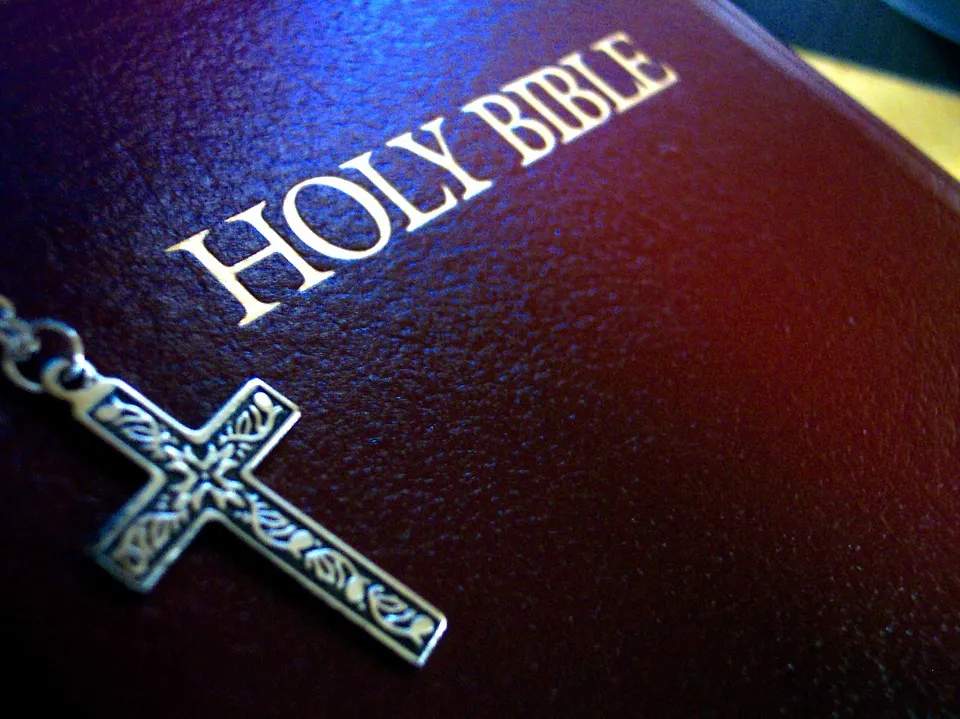The Book of Revelation describes the Son of Perdition as a figure of ultimate evil who will play a significant role in the end of times. But who is this mysterious individual? In this post, we’ll delve into the identity of the Son of Perdition and explore the deeper meanings behind this ominous term. This is a must-read for those who seek to understand the biblical prophecy and the end times.
The Definition of the Son of Perdition in Bible Prophecy

The Son of Perdition is a term used in the bible to describe a figure who is the embodiment of evil incarnate. In the Christian faith, the Son of Perdition is a major figure in the end times, and is often synonymous with the Antichrist.
The Origin and Symbolism of the Term ‘Perdition’
The term ‘Perdition’ comes from the Latin word ‘perditio’, which means ‘destruction’. It is used in the bible to describe the eternal damnation that awaits those who commit sins such as fornication, lawlessness, and rebelliousness. In biblical terms, the Son of Perdition is an individual who has given themselves over to the devil in mind, body and spirit.

The Identity of the Son of Perdition according to the Book of Revelation
The book of Revelation describes the Son of Perdition as a man of sin who has betrayed God. The Son of Perdition is said to be an agent of Satan, who is able to perform miracles and deceive even the elect. The book of Revelation also describes the Son of Perdition as having a mark of the beast on his forehead, which symbolizes his allegiance to Satan.
The Role of the Son of Perdition in the End Times and the Battle of Armageddon
In the book of Revelation, the Son of Perdition is one of the key players in the battle of Armageddon. The Son of Perdition is depicted as leading an army of demonic beings against the forces of God, and ultimately meeting his demise at the hands of the Lord.
The Connection between the Son of Perdition and the Antichrist
There is some debate amongst biblical scholars as to whether the Son of Perdition and the Antichrist are the same figure or separate individuals. Some believe that the Son of Perdition is simply a symbolic representation of evil, whereas others argue that he is a specific person who will appear at the end of times. However, most agree that the Antichrist is closely tied to the Son of Perdition, and may actually be the same individual.
The Warnings and Implications of the Son of Perdition’s Appearance in the Bible
The appearance of the Son of Perdition in the bible serves as a warning to believers to stay true to their faith and resist the temptations of the devil. It also reminds Christians of the importance of being vigilant and prepared for the end times. The Son of Perdition’s appearance in the bible suggests that the battle between good and evil will be intense, and that there will be great deception in the last days.
The Relationship between the Son of Perdition and Other Figures in the New Testament
The Son of Perdition is often compared to figures such as Judas Iscariot and the false prophet. In all cases, these individuals represent the forces of evil that seek to undermine the work of God and deceive humanity. By understanding the role of the Son of Perdition in biblical prophecy, Christians are better equipped to resist the temptations and deceptions of the devil, and stay true to their beliefs in the face of adversity.
To summarize, the Son of Perdition is a key figure in biblical prophecy who represents the forces of evil that will rise up in the end times. While the exact identity of the Son of Perdition is the subject of some debate, most Christians believe that he is closely tied to the Antichrist, and that his appearance in the bible serves as a warning to believers to remain vigilant and steadfast in their faith. By understanding the role of the Son of Perdition in biblical prophecy, Christians are better prepared to face the trials and tribulations of the end times, and remain true to their beliefs in the face of deception and adversity.
The Origin and Symbolism of the Term ‘Perdition’
As a student of Christianity, it’s important to consider the origins and symbolism behind the term ‘perdition.’ In Greek, ‘perdition’ is translated to ‘apoleia,’ which means destruction or ruin. The term was used in the New Testament to describe eternal damnation and the absence of salvation.
In essence, the concept of perdition reflects the idea of rebellion against God, sin, and an individual’s eventual punishment and separation from the divine. It’s a symbol of the dangers of falling away from the Christian faith, giving in to temptation, and the pitfalls of following the wrong path.
Moreover, the term perdition has long been associated with the figure of Judas Iscariot, the disciple who betrayed Jesus Christ. According to the Bible, Judas was possessed by Satan and brought about the ultimate destruction of Jesus. His actions resulted in his eternal damnation and confirmed his place as the ‘son of perdition.’

The term ‘perdition’ is also closely linked to the concept of the ‘beast’ or the ‘man of sin’ in the Book of Revelation. The beast is a symbol of the ultimate evil incarnate and represents all that is demonic and wicked in the world. The beast is expected to bring about great deception in the last days and to perform miraculous signs and wonders that will deceive even the elect.
So, when we explore the term ‘perdition,’ we’re looking at a concept that is deeply ingrained in the Christian faith and represents the idea of rebellion, sin, and eternal punishment. It’s a warning to all of us to stay true to our faith, resist the temptations of the world, and seek salvation through Jesus Christ.
The Identity of the Son of Perdition according to the Book of Revelation
In the Book of Revelation, the Son of Perdition is described as a figure who will appear during the end times and will be aligned with Satan to lead an apocalyptic battle against Jesus at Armageddon. The identity of the Son of Perdition has been a topic of much debate and speculation among scholars and theologians.
Here are some key components of the Son of Perdition’s identity according to the Book of Revelation:
-
He is a man of sin: The Son of Perdition is described as a person who embodies the ultimate wickedness and evil in the world. He is said to be characterized by lawlessness, rebellion, and blasphemy.
-
He opposes Jesus: The Son of Perdition is seen as a direct opponent of Jesus and his kingdom. He is depicted as having a great hatred for the truth of the Gospel and will be leading a rebellion against Jesus at Armageddon.
-
He is aligned with Satan: The Book of Revelation describes the Son of Perdition as being empowered by Satan himself. His rise to power will be aided by demonic forces and he will be fully under the control of the devil.
-
He will deceive many: The Son of Perdition is also described as being a great deceiver. He will have the ability to deceive many people, leading them astray with false teachings and lies.
The appearance of the Son of Perdition is seen as a sign of the end times in many Christian faiths. His arrival will coincide with other events described in apocalyptic literature, such as wars, famines, and natural disasters. The emergence of the Son of Perdition is seen as a time of great tribulation, and believers are warned to stay alert and watchful for his coming.
While the identity of the Son of Perdition is not explicitly revealed in the Bible, many believe he may be connected to other figures in the New Testament. Some have suggested that he may be Judas Iscariot, based on his betrayal of Jesus and association with Satan. Others have linked him to the Antichrist, a figure who is also prophesied to appear during the end times.
« Overcoming Procrastination: An Insight into What the Bible Teaches about Delaying Tasks
Understanding the Difference Between Faith and Hope: A Spiritual Perspective. »
Regardless of his exact identity, the Son of Perdition serves as a warning to believers about the nature of evil and the importance of staying faithful to Jesus. In the end, those who follow the Son of Perdition are said to face eternal damnation, while those who remain faithful to Jesus will receive eternal life.
In summary, the Son of Perdition is a figure who embodies evil incarnate in Bible prophecy. His identity is shrouded in mystery, but he is described as a man of sin who opposes Jesus and is aligned with Satan. His appearance is a sign of the end times and his deception is seen as a great danger to believers. Stay watchful and faithful, for the Son of Perdition is a warning of the great deception to come.
The Role of the Son of Perdition in the End Times and the Battle of Armageddon
The Son of Perdition is a significant figure in Bible prophecy, particularly in the context of the End Times. According to the Book of Revelation, he will play a crucial role in the final battle between good and evil, known as the Battle of Armageddon.
During the tribulation period, which is the seven-year period of turmoil that will precede the Second Coming of Jesus Christ, the Son of Perdition will rise to power and establish himself as a leader. He will deceive many people through his charismatic personality and apparent ability to perform supernatural acts.

However, the Son of Perdition’s true nature will eventually be revealed, and he will become the embodiment of evil incarnate. He will blaspheme God, declare himself to be equal to or above God, and force people to worship him.
The Battle of Armageddon is the final conflict between the forces of good and evil. It is believed that the Son of Perdition will lead an army against God’s army, which will result in his ultimate defeat and destruction.
The Son of Perdition’s role in the End Times is tied to his connection with the Antichrist. Some theologians believe that the Son of Perdition and the Antichrist are the same person, while others believe that they are two separate beings.
Regardless of their exact relationship, it is clear that the Son of Perdition and the Antichrist will work together to bring about the Great Deception, which is the widespread acceptance of a lie that will lead people away from the truth.
As followers of Christ, it is essential to understand the warnings and implications of the Son of Perdition’s appearance in the Bible. The Bible teaches that those who follow him will be condemned to eternal damnation, while those who reject him will receive eternal life.

In conclusion, the Son of Perdition’s role in Bible prophecy is significant and should not be taken lightly. He represents the ultimate evil and will play a prominent role in the End Times and the Battle of Armageddon. As Christians, it is our responsibility to understand his identity and the implications of his appearance in the Bible.
The Connection between the Son of Perdition and the Antichrist
The term “Son of Perdition” is often used interchangeably with the Antichrist in the Bible. According to the book of 2 Thessalonians, the Antichrist is referred to as the “man of lawlessness” and the “son of destruction.” This figure is portrayed as a great deceiver who will perform signs and wonders to mislead the people.
In the book of Revelation, the Antichrist is also known as the beast who rises out of the sea. This beast is given power by the dragon, who is identified as Satan himself. The beast has ten horns and seven heads, and upon its head is written a blasphemous name. It is said that all those who dwell on the earth will worship the beast, except for those whose names have been written in the book of life.
Some scholars believe that the Antichrist is meant to represent a political leader who will arise in the last days, while others see it as a figurative representation of the spirit of rebellion and lawlessness that will pervade the world at that time. Regardless of its literal or symbolic interpretation, the Antichrist is viewed as the ultimate enemy of God and His people.

The Son of Perdition, on the other hand, is seen as a specific individual who will rise to power in the end times. This figure is associated with the spirit of betrayal and rebellion, and is believed to be in league with the devil. In the Gospel of John, Judas Iscariot is referred to as the “son of perdition” for his role in betraying Jesus to the authorities.
While there is some debate among scholars about the exact nature of the connection between the Son of Perdition and the Antichrist, most agree that they are in some way related. Some believe that the Son of Perdition is simply another name for the Antichrist, while others see it as a separate figure who will work together with the Antichrist to deceive and destroy.
Regardless of their exact relationship, both the Son of Perdition and the Antichrist are portrayed as embodiments of evil and deception in the end times. Their appearance is a sign of the impending judgment of God on the world, and a call to repentance and faith for all those who would escape the coming tribulation.
In summary, the Son of Perdition and the Antichrist are both important figures in Bible prophecy, representing the ultimate enemy of God and His people in the last days. Whether viewed as separate individuals or different names for the same figure, they are a warning of the great deception and tribulation that will come upon the earth before the Second Coming of Christ.
The Warnings and Implications of the Son of Perdition’s Appearance in the Bible
The mere mention of the Son of Perdition in Bible prophecy is enough to send shivers down the spine of many believers. This is because the Bible is clear on the sinister nature of the Son of Perdition and its significance in the end times.

One of the warnings and implications associated with the Son of Perdition is the great deception that it will bring. It is said that the Son of Perdition will be the embodiment of evil incarnate and will use its demonic influence to deceive many people. This further highlights the value of being vigilant as a believer and paying attention to the guidance of the Holy Spirit.
Another warning is the manifestation of the mark of the beast. The Son of Perdition will reportedly be the one to institute the mark of the beast on everyone. This further highlights the need to be steadfast in faith and not compromise even in the face of persecution or threats.
Additionally, the appearance of the Son of Perdition is a warning against the dangers of rebellion and lawlessness. The Bible highlights the need to submit to authority and obey God’s commandments. This warning serves as a reminder to believers that there is always a choice – to follow God or to rebel against him.
Furthermore, the Son of Perdition represents the epitome of blasphemy. It will reportedly blaspheme God and be a source of offense to believers. This serves as a reminder of the need to protect one’s faith and not be swayed by the deception of the Son of Perdition.
In conclusion, the warnings and implications associated with the Son of Perdition’s appearance in the Bible highlight the need for believers to be vigilant, steadfast, and obedient. While the Son of Perdition is portrayed as the epitome of evil, believers can take comfort in the fact that God is ultimately in control and will triumph over evil in the end.
The Relationship between the Son of Perdition and Other Figures in the New Testament

In the New Testament, there are various figures that are related to the Son of Perdition. One of the most significant figures is the Antichrist, who is also mentioned in the Book of Revelation.
According to the Bible, the Antichrist is a political leader who will arise in the end times and deceive many people with his false teachings and promises. He will work closely with the False Prophet, who is also a key figure in end-time prophecy. The False Prophet is believed to be a religious leader who will support the Antichrist and help promote his messages.
The identity of the Antichrist has been the subject of much debate and speculation among scholars and theologians. Some believe that he is a specific person who will arise in the future, while others believe that he is a symbolic representation of evil forces in the world.
The Son of Perdition is also related to Judas Iscariot, who betrayed Jesus Christ and was later overcome by guilt and shame. In John 17:12, Jesus refers to Judas as the “son of perdition.” This has led many to believe that the Son of Perdition is a figure representing ultimate betrayal and rejection of God’s love and grace.
Additionally, the Son of Perdition is often associated with the idea of rebellion and lawlessness. In 2 Thessalonians 2:3, the Son of Perdition is referred to as the “man of sin” who opposes and exalts himself above all that is called God. This suggests that he is someone who is unrestrained by moral or ethical principles and seeks only his own pleasure and power.

In summary, the Son of Perdition is a complex and significant figure in end-time prophecy. He is related to other key figures such as the Antichrist, False Prophet, and Judas Iscariot. His appearance in the Bible is a warning to all Christians about the dangers of demonic influence and the importance of staying true to one’s faith in the face of great deception.












